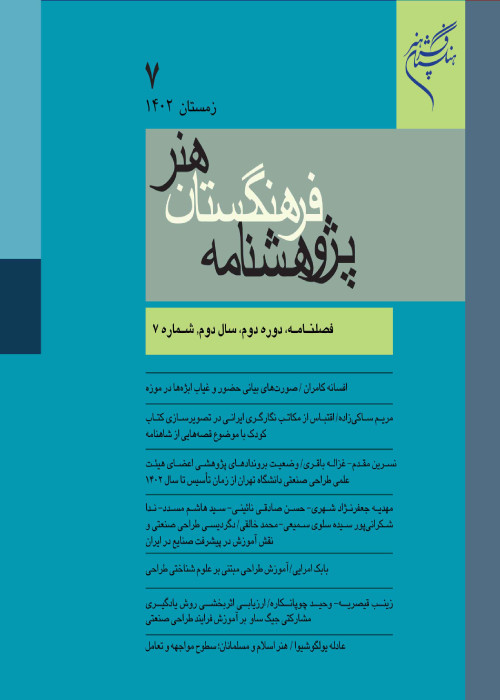Spatial Asynchrony: The Comparative Reading of the Origins of Modern Spatial Imagination in the Physique of the Nasseri Capital and the Late Safavid Painting
The entry to modern era from the Renaissance age required a revolution in spatial perception. The emergence of perspective in Renaissance painting, as well as the appearance of ideas based on the geometric structure of space in urban design were manifestations of this new perception. The traditional Iranian painting was somehow influenced by perspective since mid Safavid period. There is also evidence indicating that the modern concept of space started influencing Iranian urban design and fabric later in mid-Qajar period. The focus of the present research is on the spatial logics of physical changes of mid-Qajar Tehran (the age of Nasser o-Din Shah) and substantial space-making changes in the late Safavid painting. Adopting a hermeneutic approach, the imagination of the space is taken here as a phenomenon whose appearance depends on any given age’s historical ’horizon’. Central to the research is a comparison between the space in two illustrations: Mohammad Zaman’s Offering Iradj’s Head to his Brothers Salm and Tour (1086), and Abd ol-Ghaffar’s 1309 map of Tehran in which urban physical transfiguration is evident. This research finds structural similarities between the ways the modern space was accepted between Iranian painting and urbanism. It appeared in painting at a much earlier stage, rendering painting as the vanguard medium. Comparing the two images, it became clear that the painting’s perspectival orthogons and the city’s orthogonal grid structure were both developed ‘outside’ traditional space. This was interpreted as first and foremost a sign of structural contrast in the space. The painting’s narrative perspectival structure is in the form of vistas and buildings located against a background of traditional space. Abd ol-Ghaffar map’s modern streets and space are also developed outside the old city gates (the traditional town centre). This tension and contrast are gradually imported into the traditional space internalising and intensifying transfigurations.
- حق عضویت دریافتی صرف حمایت از نشریات عضو و نگهداری، تکمیل و توسعه مگیران میشود.
- پرداخت حق اشتراک و دانلود مقالات اجازه بازنشر آن در سایر رسانههای چاپی و دیجیتال را به کاربر نمیدهد.


